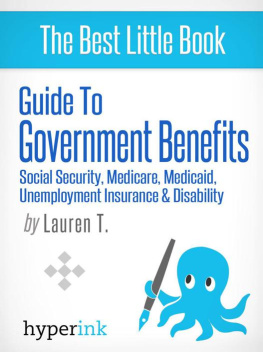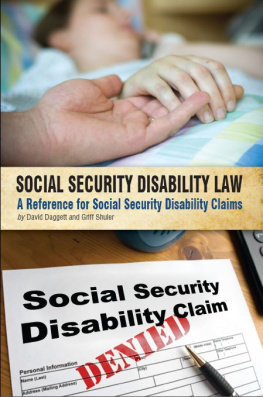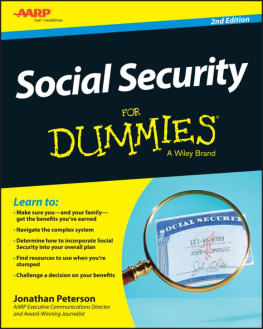Lauren T. - Guide to Government Benefits: Social Security, Medicare, Medicaid, Unemployment Insurance, Disability
Here you can read online Lauren T. - Guide to Government Benefits: Social Security, Medicare, Medicaid, Unemployment Insurance, Disability full text of the book (entire story) in english for free. Download pdf and epub, get meaning, cover and reviews about this ebook. year: 2012, publisher: Hyperink, genre: Politics. Description of the work, (preface) as well as reviews are available. Best literature library LitArk.com created for fans of good reading and offers a wide selection of genres:
Romance novel
Science fiction
Adventure
Detective
Science
History
Home and family
Prose
Art
Politics
Computer
Non-fiction
Religion
Business
Children
Humor
Choose a favorite category and find really read worthwhile books. Enjoy immersion in the world of imagination, feel the emotions of the characters or learn something new for yourself, make an fascinating discovery.
Guide to Government Benefits: Social Security, Medicare, Medicaid, Unemployment Insurance, Disability: summary, description and annotation
We offer to read an annotation, description, summary or preface (depends on what the author of the book "Guide to Government Benefits: Social Security, Medicare, Medicaid, Unemployment Insurance, Disability" wrote himself). If you haven't found the necessary information about the book — write in the comments, we will try to find it.
ABOUT THE BOOK
According to the Nation Poverty Center of the University of Michigan, 15 percent of the entire US population, or 45 million people, lived at or below the national poverty level in 2010. Many of these people are barely able to make ends meet, and are forced to make difficult decisions about paying for one basic necessity over another. This often leads to stress-related conditions such as heart disease, depression and anxiety, and many poverty-stricken people who cannot afford to treat these medical problems themselves. Fortunately, federal and state governments provide income, health care and other benefits as safety nets for impoverished and economically vulnerable people. These come in the form of Social Security benefits, Medicaid and unemployment insurance. Government benefits are an important aspect of a healthy, productive society and serve as a fail-safe against widespread poverty. Without them, many would go without basics such as food, shelter clothing and health care.
EXCERPT FROM THE BOOK
Once the application is submitted, the SSA usually does not need require documentation from the applicant because the information can be easily verified by various government databases. However, if the Social Security Administration does request proof or other documentation of any information on the application, potential beneficiaries must turn in the required paperwork within the specified time frame to avoid a delay in receiving benefits. The most commonly requested documents include photo identification, Social Security cards, birth certificates, marriage certificates and tax returns. The SSA does not accept photocopies or faxes of these documents; applicants must send the original documents by mail. The Social Security Administration will mail them back at the end of the application process. Survivors Benefits When a worker dies, the Social Security Administration provides their family with survivors benefits to help fill the income gap left behind. These come as both one-time and monthly payments. A worker must have earned at least six credits in the three years before his death for his family to receive survivors benefits... Buy a copy to keep reading!
CHAPTER OUTLINE
Guide to Government Benefits: Social Security, Medicare, Medicaid, Unemployment Insurance, Disability+ Introduction+ Retirement Benefits+ Survivors Benefits+ Disability Benefits+ ...and much more
Lauren T.: author's other books
Who wrote Guide to Government Benefits: Social Security, Medicare, Medicaid, Unemployment Insurance, Disability? Find out the surname, the name of the author of the book and a list of all author's works by series.








